► Renault’s first turbocharged saloon driven
► Designed to fight BMW, Audi and Alfa
► Unassuming hero not quite what it seems…
In 1980, Renault was all about the Turbo. The gamechanging mid-engined 5T was winning in Group 4 rallying, and in Formula 1, Jean-Pierre Jabouille and Rene Arnoux had ambitions of championship glory in the fast but fragile RE20. Turbo was the byword for power and success, and Renault was spearheading forced induction cars into the mainstream.
It was keen to turbocharge hero models across its range, and once the bespoke first-generation 5 Turbo was installed in showrooms, the company worked hard to get the next model out. When asked today which model really spearheaded the turbo for Renault, most enthusiasts would point to the R5 – and if not the firebreathing mid-engined road car, they’d probably cite the 5 Gordini.
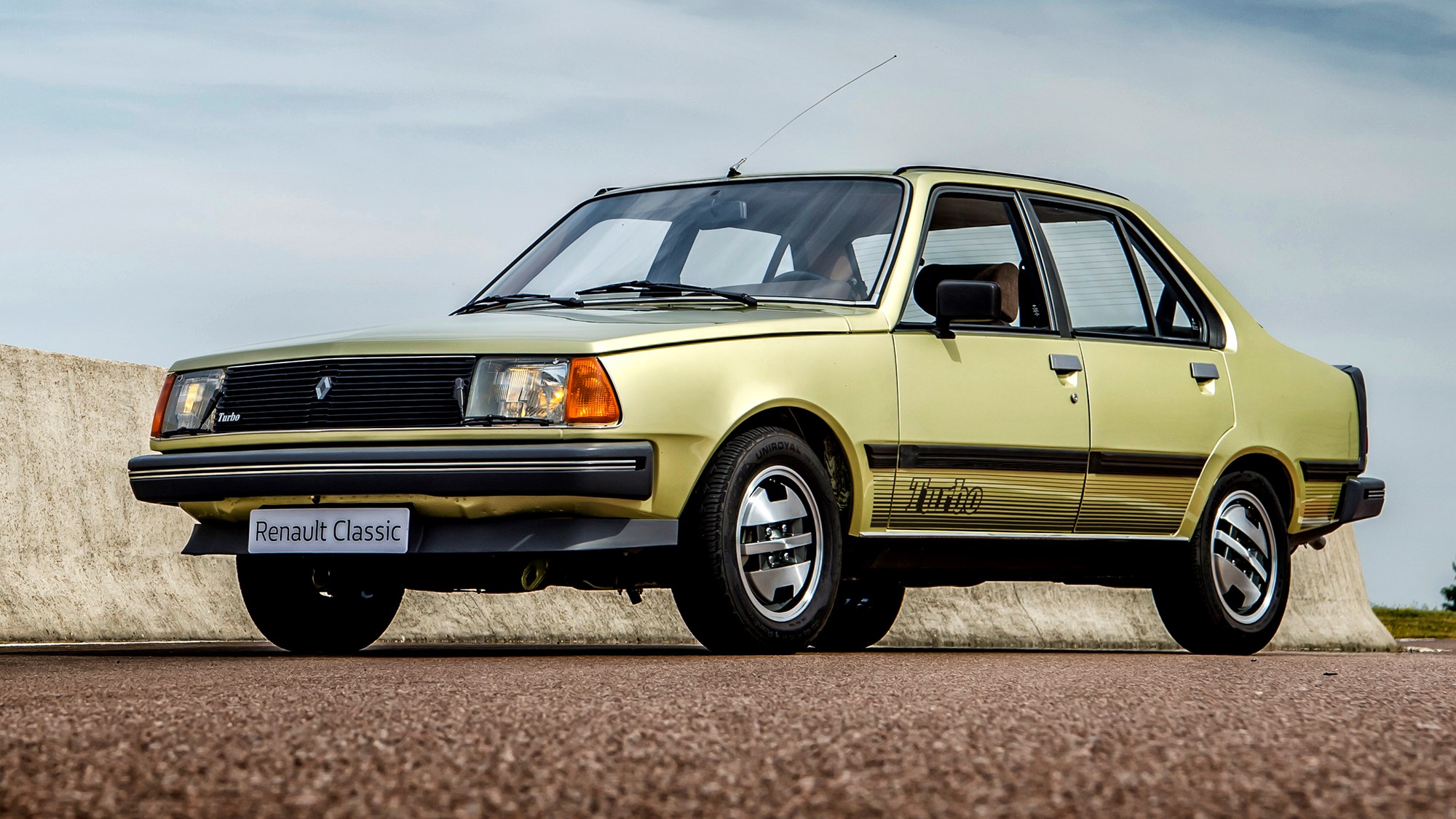
But they’d be wrong. When the 18 Turbo went on sale in the UK in 1981, it not only became Renault’s first mainstream blower, but also the cheapest car you could buy so equipped. Hitherto in Europe, it was only really Saab that had been turbocharging saloons and hatchbacks, with the rest of them being reserved for more specialist sports cars. These really were the early days of the turbo – and Renault had a lot to prove with the technology.
Of course, we know the rest now – and it’s becoming increasingly difficult to find a car that isn’t turbocharged today. So, it obviously worked out for Renault.
What’s the Renault 18 like to drive?
There was nothing particularly novel about the Renault 18. It was a straightforward rival to the Ford Cortina and a very clever reskin of the old R12. As such, it shared its front-wheel drive, longitudinal-engined layout, as well as its soft-riding torsion bar suspension set-up. Its 1565cc engine was also shared with the R12 and R16 among others, and was dated in its design, with – gasp – pushrods in its top-end. But despite that, it squeezed out a useful 110bhp (similar to a Volkswagen Golf GTI Mk1), and weighed a comparatively featherweight 1040kg.
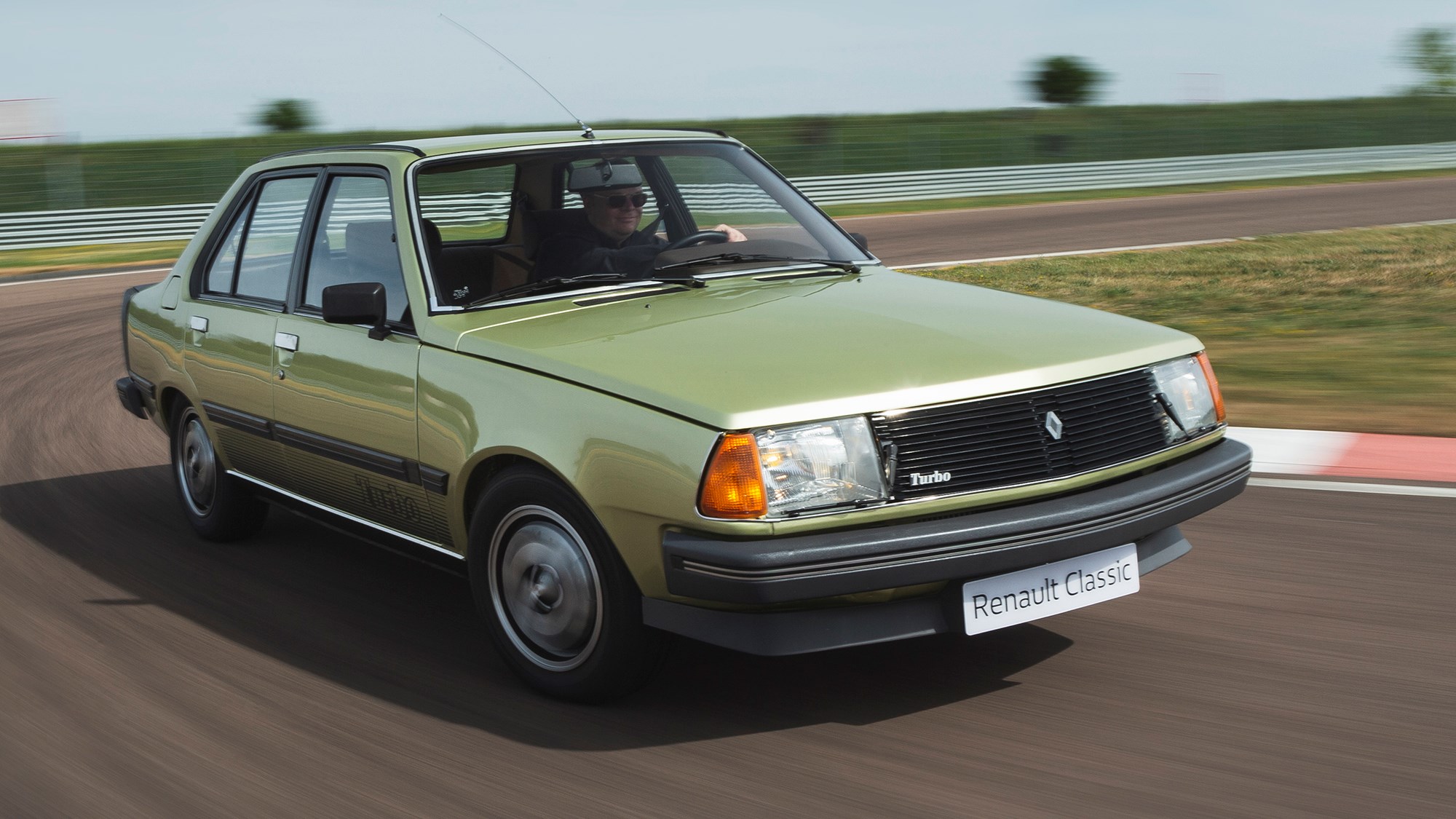
Its lack of mass is what strikes you as you pull away for the first time. From its near-silent idle (yes, really) and into first, it pulls much more eagerly than you’d expect from low speeds. Its initial response can be put down to its Garrett T3 running a low level of boost, the engine running a relatively high level of compression (for a turbo), and the throttle being directly connected to a carburettor not known for masking its actions.
So, it’s swift and refined away from the lights, and lacking in the expected throttle lag that you get with early turbo installations. In all, it performs like a well-mannered 2.0-litre saloon, flush with torque and restfulness, and not in any way frenetic or laggy. Which is good, as this level of performance and drivability is exactly what Renault had been looking for – it wanted to make a junior executive out of the R18, and not a sporting saloon.
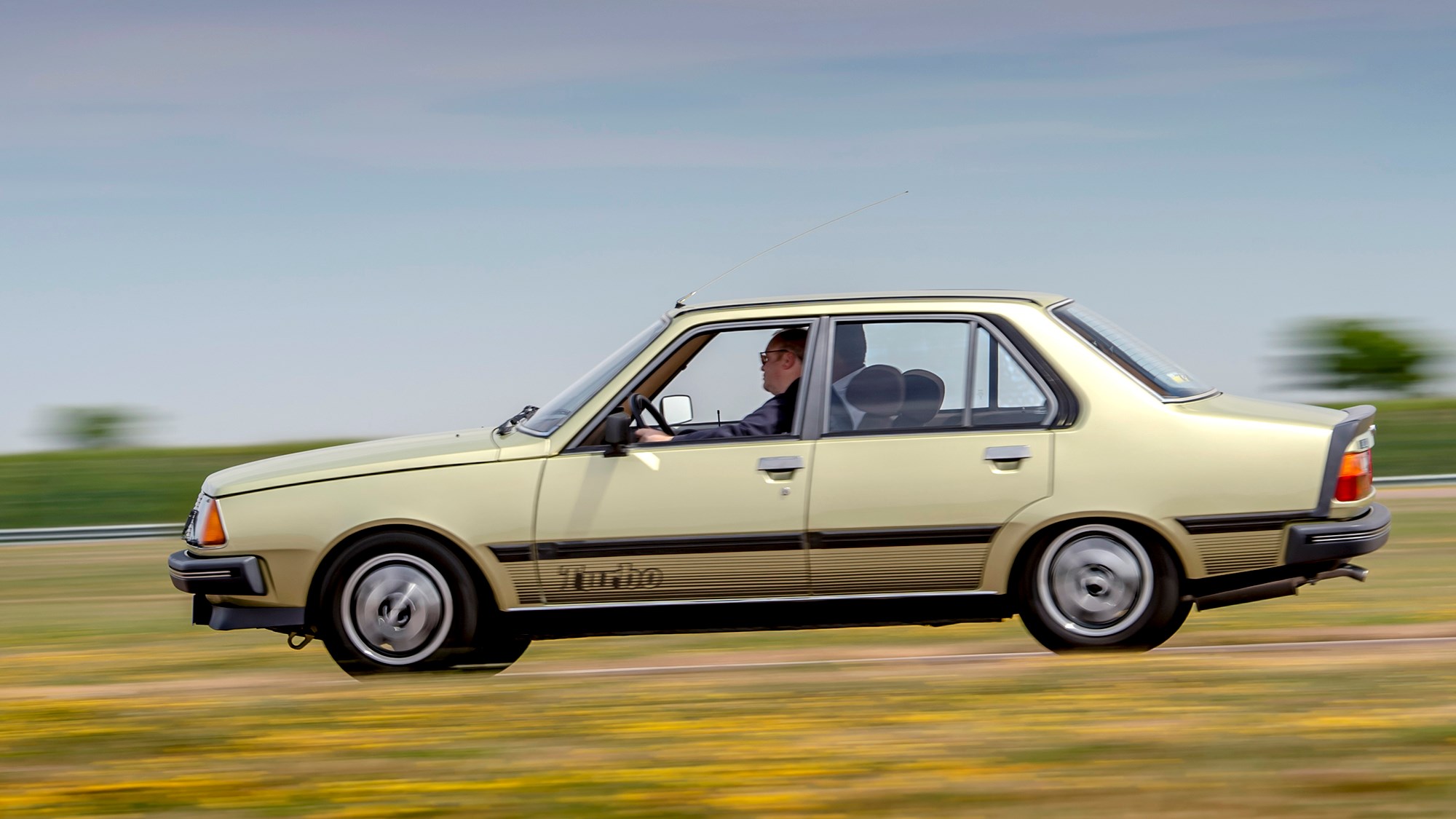
The problem is that no-one sent that memo to the marketing team. The rather overt spoilers and side graphics set an expectation that this car is never going to meet. Today, they look just-so, and are probably the coolest graphics ever to adorn a Renault, but back in 1981, they gave this car a mutton-dressed-as-lamb appearance that did it no favours alongside the classier Audi 80 GLE or BMW 316.
As for handling, the 18T is everything you expect it to be. The car I’m driving, a low-miler that’s been fastidiously prepared by Renault Classic in France, is lacking the power steering UK cars received which immediately masks this car’s agility. It’s undoubtedly poised in bends, but the steering weight makes it feel more ungainly than it really is, and the slow rack and well-controlled but considerable bodyroll makes a meal of quick direction changes.
And that’s a shame because aside from mid-bend understeer when you abuse it, the 18T is poised and happy, and feels well set up for road work. The steering geometry is optimised for strong self-centring, which interferes with ambitions of smooth cornering, but the pay-off is excellent motorway feel and a sense of wellbeing once you’re rolling on sweeping A-roads. The ride is excellent, as you’d expect – firmer than a standard 18, but soft and pliant in absolute terms, and that would have made it a great mid-range executive car in its day.
What’s it like inside?
It’s not easy to love its bold instrument graphics, and flashy warning lights. This is a car that was designed to make a colourful impression, and you’re left in no doubt today that it’s a confident car designed by a car manufacturer that knew its audience without really understanding that of its intended rivals. Compare its cabin with a sombre Audi 80 or BMW 3-series, and the 18T feels like it’s on a different planet.
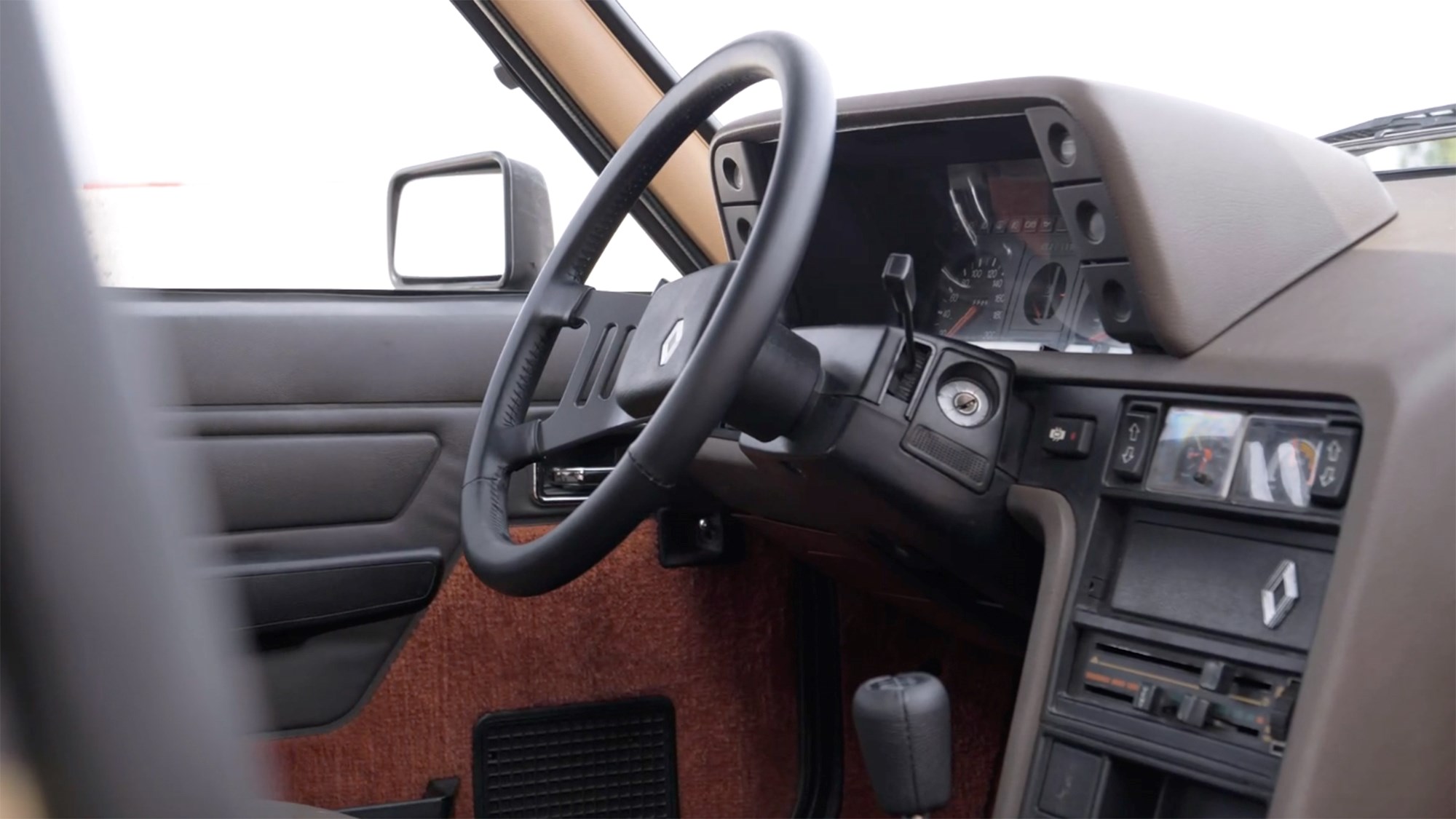
Not in terms of quality or architecture, though. The dashboard, door cards, and all the primary controls are solid and well screwed together, and actually feel like they’re going to last. The seats are soft and enveloping, but offer more than enough support for the press-on driver. The driving position is good, although spoiled by the cramped footwell – and the visibility out is magnificent.
It’s hard to believe that such a small interior passed as family-friendly back then – the door apertures aren’t large enough, and it’s quite a clamber to get in the rear especially. The front seats don’t travel far enough back, and there’s just not enough knee or headroom in the rear either. Have people really grown that much in the past four decades?
But as a classic car for one or two, it’s just fine.
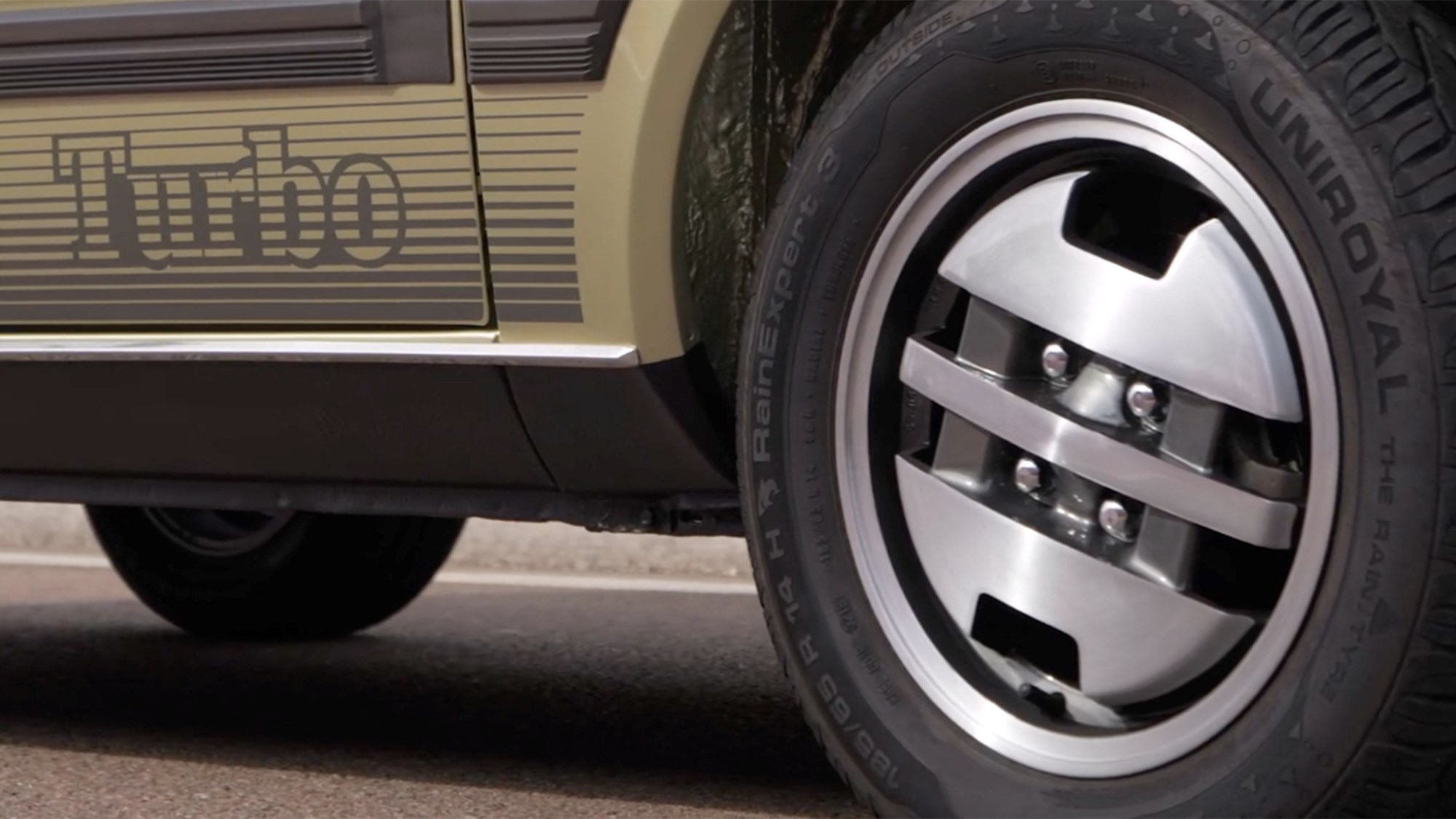
Renault 18 Turbo: verdict
In its 1981 Giant Test verdict, CAR magazine said of the Renault 18 Turbo: ‘The Renault has innate flaws compared with its rivals from Audi and Alfa Romeo. But it has many compensating virtues, too. The turbocharged engine works well, giving good economy and strong performance without the low-speed lethargy of most other turbos. Dismiss the Renault’s humble origins and assess it purely on what it does and provides and the 18T is a great all-rounder. Sharp handling and assured roadholding do not make it a sports car, but they do help it to make a very agreeable driving machine.’
Forty years on, and it’s hard to argue with that verdict, although I imagine that an army of CAR readers today would wonder at the wisdom of putting an 18T in first place in a group test that also contained the Alfa Romeo Giulietta and Audi 80. But to bemoan this verdict would probably be to miss the point – what the Renault was mostly significant for was showing that a well-installed turbo was capable of levelling any playing field.
It delivered decent performance and – at the time – plenty of kudos to a worthy but hardly class-leading saloon. The stripes, spoilers and beautiful alloys might have implied the 18T was a balls-out performance car, but the reality was that the company had produced a refined, quick and very capable junior executive car on the back of its glamorous motorsport programme. So, the marketing department had got it wrong – not the engineers.
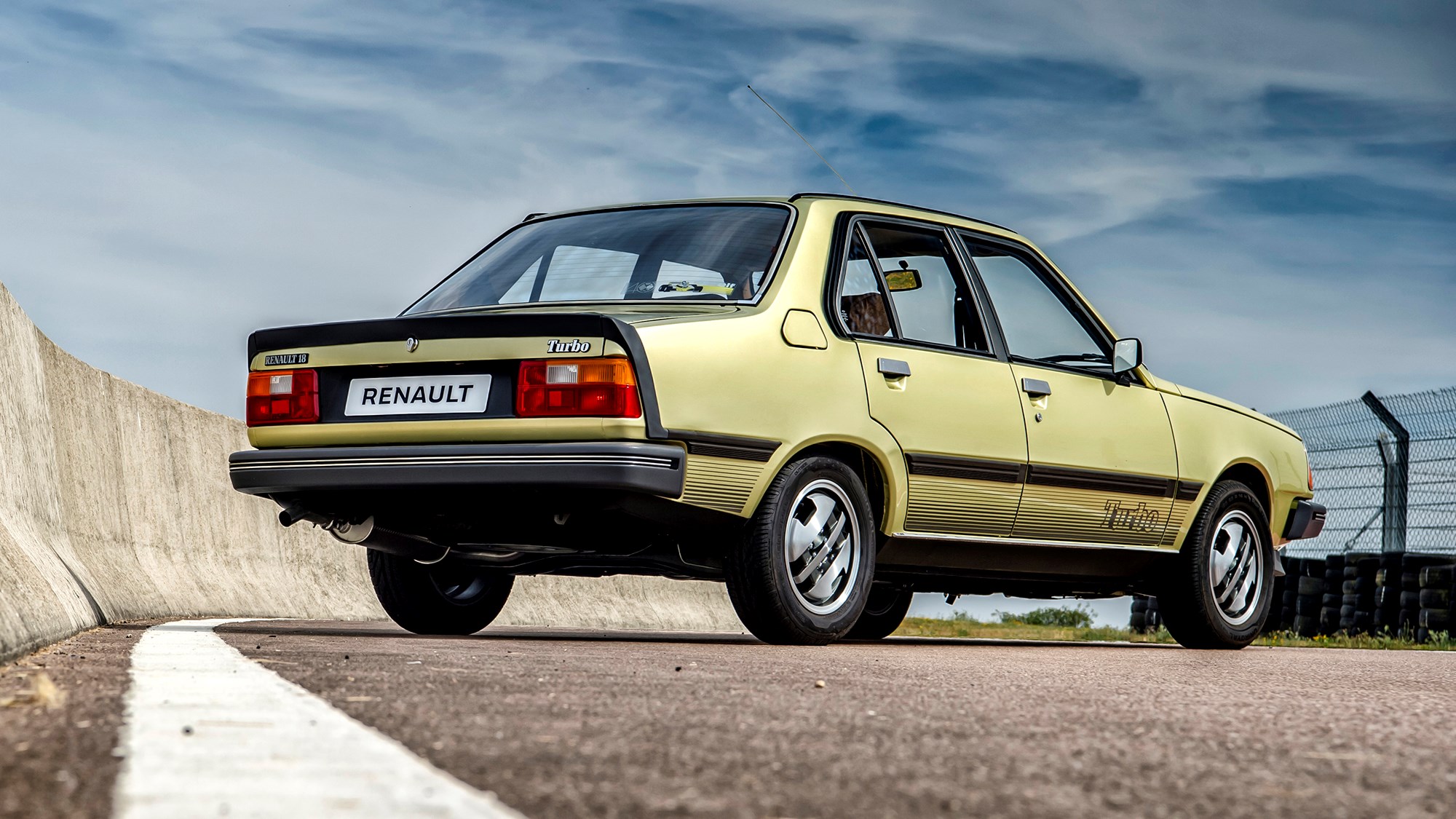
It’s also a decent steer today. Granted, there are only a couple of them left in the UK, so your chances of finding one are remote – so you’ll just have to take my word for it. It’s a shame that for every Renault 18 Turbo left here, there are probably 100 Ford Cortina Ghias – and I know which one I’d have. The one with the diamond on its grille.
But let’s also remember this: what the 18T did very well was to democratise the turbo once and for all. It was the cheapest forced-induction car you could buy in its day – and proved that the turbo was much more than a bolt-on go-faster accessory, and was here to stay for good…
More Renault reviews by CAR magazine